It feels like just last week that 2019-20 OHL camps were opening up. The season has quickly flown by and, with a month to go, the Windsor Spitfires find themselves in the middle of a battle for home ice in the Western Conference. Entering the final stretch, several stories are worth keeping our eyes on.
Related: The NHL’s Best Farm Systems Ranked – Midseason Update
Last season at this time, getting into the playoffs was the Spitfires’ biggest goal. They were rebuilding following the 2017 Memorial Cup and the young roster was eager to show their stuff. Fast forward to now and they’ve entered a lengthy battle where nothing will come easy. That’s part of the fun, though. As they continue, several mini-stories are unfolding that make this journey even more interesting.
Let’s take a look at those five stories and how they affect the playoff push.
Playoff Stretch Stories
5. Youth Playing Time
When you’re in a playoff battle, the natural instinct is to play the veterans who know the league. The experience will take control. Is it the best option, though? Not necessarily.
In February, NHL Central Scouting came out with their “Watch List” for the 2020 NHL Draft in Montreal and six Spitfires were on there. Forwards Will Cuylle, Jean-Luc Foudy, and Kyle McDonald made it, as well as defencemen Ruben Rafkin, Louka Henault, and Dylan Robinson. Being on the list is a big deal, as is having six guys involved. It’s how you handle the situation that truly counts, though.
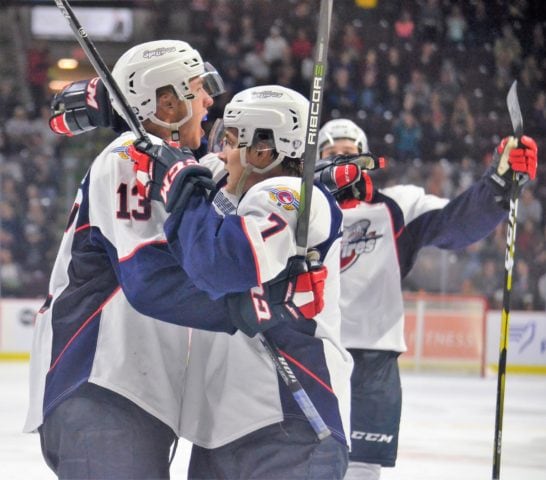
You want your veterans to lead the way, but you also want your youngsters to show what they’re capable of, sink or swim. It’s a development league, after all. Players sign on with hopes of elevating their game to the point where they can move up. It’s tough when you’re not getting the proper chances.
The same goes for the team’s rookies — Wyatt Johnston, Pasquale Zito, Xavier Medina, Rafkin, and Robinson. The Spitfires aren’t expecting to compete for any titles this season. Instead, they’re targeting 2020-21 and beyond. How do you develop them? By putting them in the best position to succeed and that’s not in the press box.
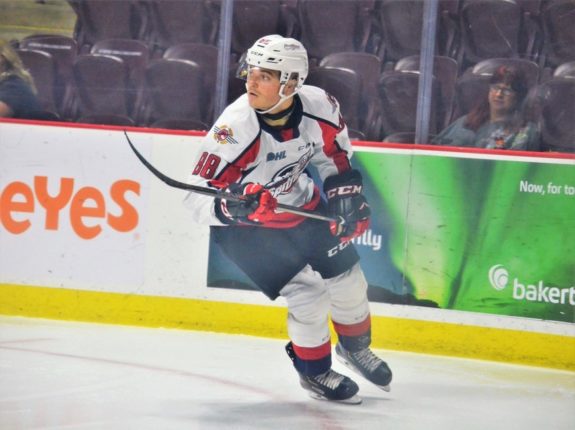
Giving the draft prospects and rookies proper ice time will only help the team in seasons to come. That’s how Dallas Stars’ prospect Curtis Douglas and Vegas Golden Knights’ prospect Connor Corcoran got to this point. The veterans lead by example but the youth get the playing time they need.
Getting home ice is important but so is the development of your youth.
4. Help from Rivals
The Western Conference has become notorious for bringing the “every point counts” cliche to a startling reality. With just three points separating the first seed from fourth and two points separating fifth and sixth, nobody can really afford to take a period off. It’s scary but it’s the harsh truth.
The simple answer would be to just focus on your own games. The Spitfires could win out, finish with 91 points, and see where the chips fall. However, that’s not realistic.
With the Saginaw Spirit, Flint Firebirds, London Knights, and Kitchener Rangers all adding at the trade deadline in January, teams are finding their stride. Add in the Guelph Storm nipping at the Spitfires’ heels and you’ve got no choice but to watch your competition.
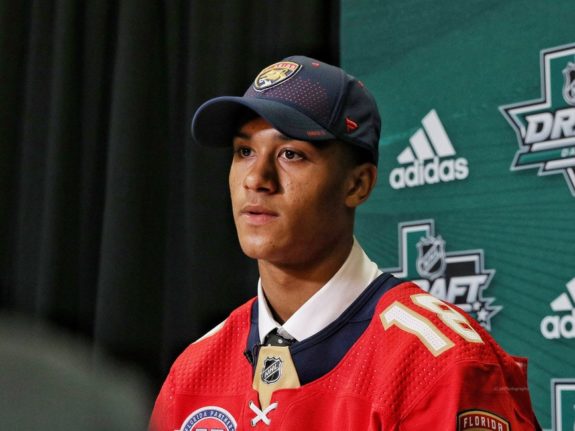
Coming into this weekend, the Spitfires are the only club who has won fewer than five of their last 10. It’s a troubling trend and one that can’t continue. With a nine-season streak of not making the second round of the playoffs, getting home ice is a must.
General manager Bill Bowler opted to not make any moves at the deadline. So far, it’s being questioned and rightfully so. It’s difficult for fans to watch a team near the top of the standings sit idle while their rivals add valuable pieces.
Point blank — the Spitfires need to turn this around and will need some help from the competition if they want to make history.
3. Staying Fresh with Busy Schedule
The story all season has been the Spitfires playing the fewest games in the OHL. While they’ve taken advantage of it, life from here-on-out is chaotic and rest will be at a premium.
The Spitfires are tackling a crazy stretch of seven games in 11 days. Plus, every weekend until the playoffs has three games. It’s a challenge but one that’s been known about since late June. No excuses, just tackle it.
This is where the veterans, coaches, and depth come into play. The veterans have done this song-and-dance before and they’ll need to show the youngsters the proper ways, both on-and-off the ice.

Letowski and his staff put together the best overall plans to ensure proper rest, nutrition, and game-utilization. Plus, they’ve corrected depth issues from the past. Having healthy scratches can be a good thing if they’re managed properly. That means sitting the ones you need to, regardless of whether they’re a veteran or not.
The goal this season was to build on the success and development of 2018-19. While they’ve done an admirable job so far, this stretch will show what they’re truly made of.
2. Trevor Letowski’s Systems
Part of this entire process will be ensuring the Spitfires are competitive for 60 minutes every night. That’s not just motivation, but systems, too.
Last season, Letowski created a defence-first system that, while successful at times, lacked any finishing power. They held back, forced teams to come at them, and it cost them offensively. With this much talent on the roster, it’s tough to justify that. It created some backlash and the coaches heard loud and clear.
In September, Letowski said they had come up with new systems that were designed to create offense and properly use their team speed. It worked, as they’ve scored 16 more goals in 12 fewer games so far.
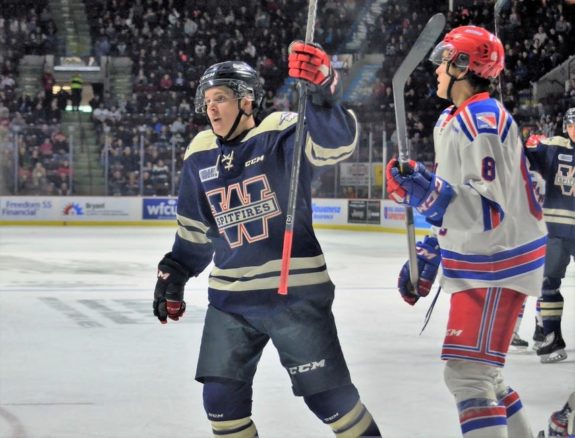
Unfortunately, there have been games where Letowski has resorted back to the old systems. In a game against the Knights in January, even while down two goals, the Spitfires held back and waited for the high-powered Knights to come at them. The result was a 6-3 loss on national TV. The same thing has happened multiple times since, frustrating fans and creating plenty of head-scratching.
The Spitfires find more success when they push the play, take the body on the forecheck, and wear down their opponents. If they get away from that, all bets are off. Can Letowski stick to what works or will he resort back to old habits? Let’s hope it’s the former.
1. Blue Ice Battle — Kari Piiroinen v. Xavier Medina
It’s impossible to talk about the final playoff push without mentioning the two goaltenders — Medina and Kari Piiroinen.
Piiroinen came to the club in the summer of 2018 from Helsinki, Finland. After the Spitfires traded Michael DiPietro to the Ottawa 67’s in Dec. 2018, Piiroinen was expected to be the future.
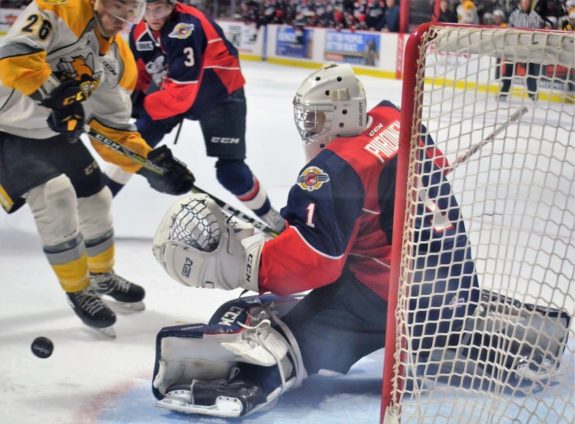
Enter Medina. The team’s third-round pick in 2018 played for the Oakland Jr. Grizzlies last season before signing with the Spitfires this summer. Since then, it’s become a battle between the two 18-year-old goaltenders.
By late February, it was expected that one would take over the starter’s role. However, it’s become a split job with uncertainty from game-to-game. Both have had outstanding stretches and ones you’d rather forget about. This makes life a battle of extremes for the coaches.
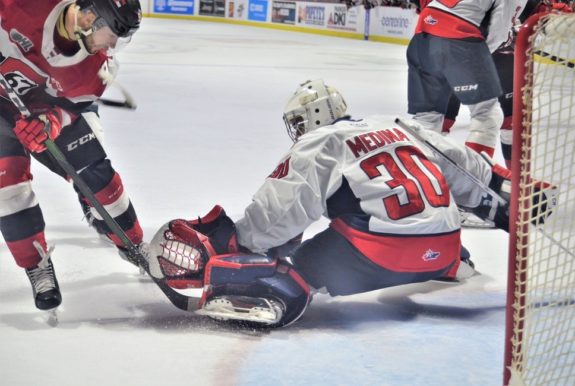
While Piiroinen is the veteran, it’s likely both will see ice entering the final month. Whoever performs best should get the coveted playoff crease. It’s not like the DiPietro-era where you knew the situation well beforehand, but it doesn’t have to be a bad thing. If both Piiroinen and Medina perform up to their capabilities, this could be a really good thing for the Spitfires.
The final month of the season is going to test this club more than anything has so far. These stories will go a long way in determining if the Spitfires finally see ice once the first round is done.